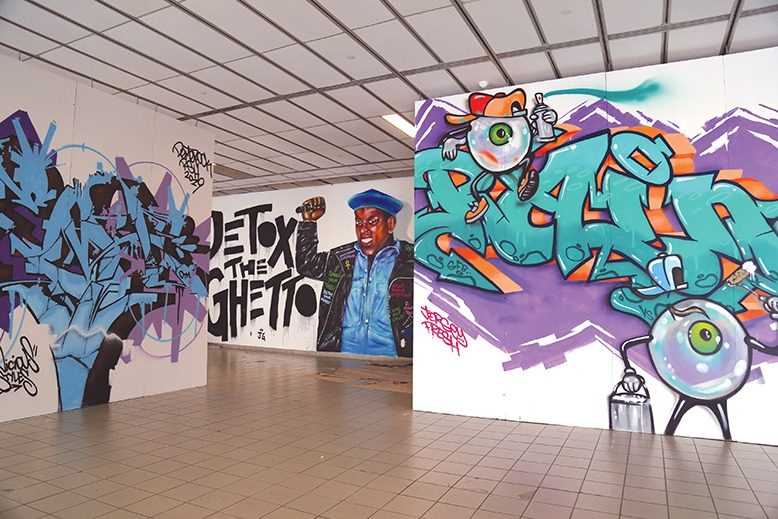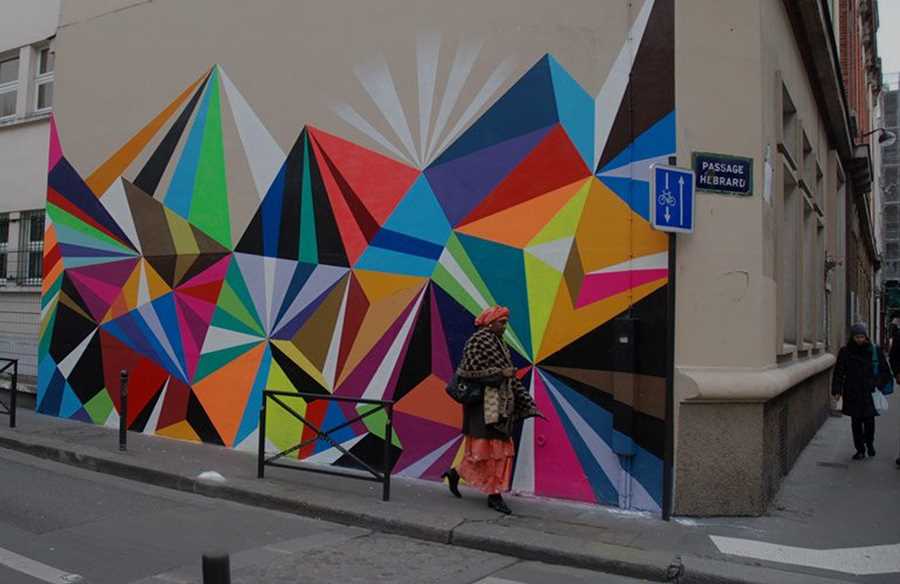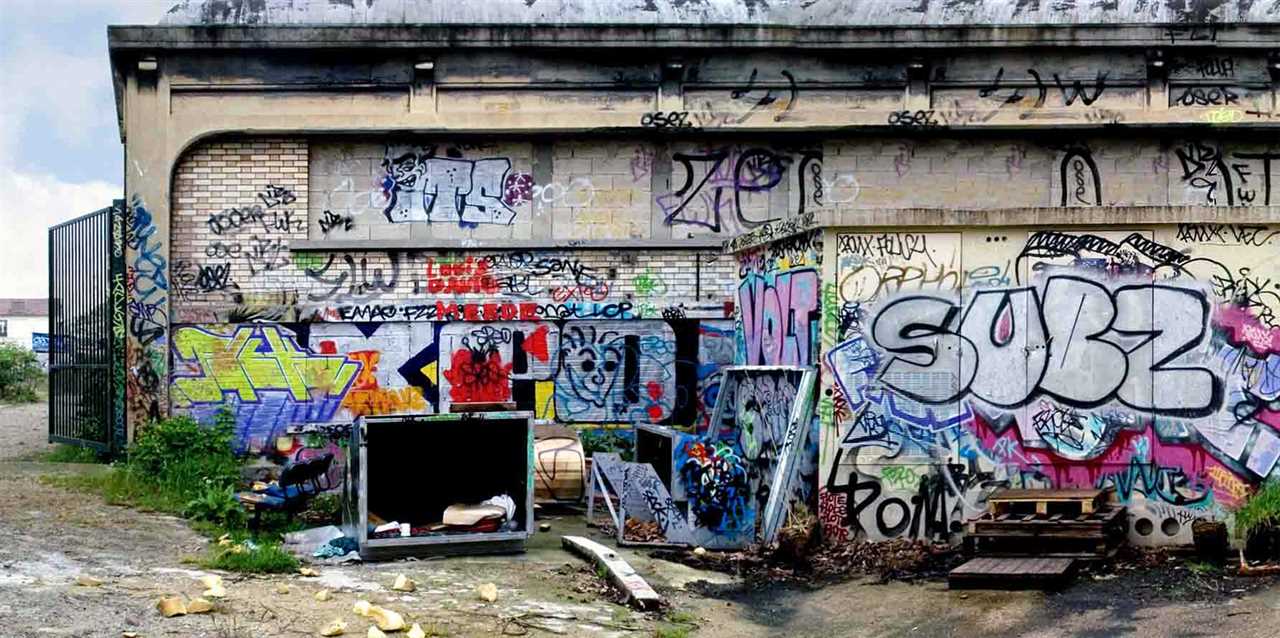
In the bustling streets of our cities, amidst the concrete jungle that surrounds us, a distinctive form of artistic expression comes to life: graffiti. This urban artwork, born from rebellion and creativity, empowers individuals to leave their mark on the world and reclaim public spaces.
Graffiti has long been a voice for the marginalized, the unheard, and the repressed. It serves as a visual manifesto, capturing the raw emotions and social commentary of the artist. Through vibrant colors, intricate designs, and powerful messages, graffiti springs to life on walls, bridges, and buildings, demanding attention and sparking conversations.
What began as an act of defiance against societal norms has evolved into a respected art form that challenges the boundaries of perception. Graffiti artists, armed with spray cans and imagination, turn mundane surfaces into captivating canvases that blur the lines between vandalism and art. With each stroke of paint, they transform the mundane into the extraordinary, offering glimpses into alternative realities and breathing life into the urban environment.
Far from being mere acts of vandalism, graffiti designs have become vehicles for community engagement and cultural expression. In some neighborhoods, they serve as vivid representations of local history and identity, paying homage to the vibrant tapestries that make up our society. They invite passersby to pause and reflect while igniting a sense of pride and unity among residents.
History of Graffiti
Graffiti has been a form of artistic expression for centuries, dating back to ancient times. The origins of graffiti can be traced back to early civilizations such as ancient Egypt and Greece, where graffiti was commonly found on their walls and buildings.
In ancient Rome, graffiti was used as a means of political and social expression. Citizens would write messages and draw images on walls to convey their opinions and thoughts. Graffiti was also used as a way to mark territories and communicate messages amongst ancient tribes and cultures.
The Rise of Modern Graffiti
The modern form of graffiti that we are familiar with today originated in the late 1960s in Philadelphia, Pennsylvania, and New York City. It began as a subculture movement among urban youth who wanted to leave their mark on the cityscape.
During this time, graffiti was seen as a form of rebellion against societal norms and a way to reclaim public spaces. It was often associated with hip-hop culture and was prevalent in neighborhoods with high crime rates and poverty.
Evolution of Graffiti
In the 1990s, graffiti started to gain recognition as a legitimate art form. Artists like Jean-Michel Basquiat and Keith Haring transitioned from the streets to galleries, showcasing their graffiti-inspired works. This led to the acceptance and appreciation of graffiti as a legitimate form of artistic expression.
Today, graffiti continues to evolve and adapt with new techniques and styles. It can be found in cities around the world, with artists using various mediums such as stencils, stickers, and digital technologies to create their designs.
Graffiti, once seen as vandalism and a form of rebellion, has now become an accepted and celebrated art form. It serves as a platform for artists to express their creativity, make political statements, and beautify the urban environment.
Graffiti Techniques
Graffiti is a unique art form that has been practiced for centuries. It encompasses a variety of techniques that artists use to create their expressive and often controversial works in the urban environment.
1. Tagging: Tagging is one of the most basic graffiti techniques. It involves the repeated use of a stylized signature or “tag” to mark territory or gain recognition. Taggers often use quick, flowing movements to create their tags, and they may be done with paint, markers, or etching tools.
2. Throw-ups: Throw-ups are larger and more elaborate than tags. They typically consist of stylized letters that are quickly and forcefully applied to a surface using cans of spray paint. Throw-ups are often created using a combination of bold outlines and vibrant colors.
3. Stenciling: Stenciling is a technique that involves creating a stencil and then applying paint or graffiti ink over it to create a design. Stencils allow for precise and detailed images to be quickly reproduced on various surfaces.
4. Wildstyle: Wildstyle is a highly complex and abstract graffiti technique that is often difficult to read. It involves overlapping letters, arrows, and other symbols to create a visually dynamic and intricate composition.
5. 3D: 3D graffiti techniques create the illusion of depth and dimension on a two-dimensional surface. Artists use shading, highlights, and perspective to make their letters or designs appear three-dimensional, using techniques such as shadowing and highlighting.
6. Murals: Murals are large-scale graffiti works that often cover entire walls or buildings. They can be created using any combination of techniques, and they often depict detailed images or scenes that tell a story or convey a message.
These are just a few of the many graffiti techniques that artists employ to express themselves in the urban environment. Each technique offers its own unique challenges and opportunities for artistic expression.
Graffiti Artists and their Styles
1. Tagging
Tagging is one of the most basic forms of graffiti and often serves as a starting point for aspiring artists. It involves writing one’s name or nickname in a stylized manner, usually using spray paint cans. Artists known for their tagging style include Taki 183 and Cornbread.
2. Wildstyle

3. Stencil Art

Stencil art is a technique where artists use stencils to create images or patterns. This style allows for more detailed and precise artwork. Banksy, an anonymous graffiti artist from the UK, is famous for his stencil artwork that often carries social or political messages.
4. 3D Graffiti

3D graffiti creates the illusion of three-dimensional objects on two-dimensional surfaces. Artists use techniques such as shading and perspective to give their artwork depth and make it appear as if it is popping out of the wall. DAIM and Odeith are notable artists known for their expertise in 3D graffiti.
5. Muralism
Muralism is a style of graffiti that involves creating large-scale artworks on walls and buildings. These murals often depict scenes or convey messages and can be found in urban areas around the world. Artists like Os Gêmeos and Roa have gained recognition for their impressive muralist graffiti.
These are just a few examples of the wide range of styles and techniques that graffiti artists use to express themselves. Each artist brings their own unique perspective and creativity to the urban environment, leaving their mark and contributing to the vibrant street art culture.
Graffiti as Murals

Graffiti has evolved from being considered a form of vandalism to being recognized as a legitimate art form. One specific type of graffiti that showcases this artistic transformation is graffiti murals. Graffiti murals are large-scale artworks that are painted directly onto walls or other surfaces in urban environments.
Urban Art Masterpieces
Graffiti murals have the power to transform a plain and dull wall into a vibrant and captivating piece of art. Artists who create graffiti murals use their skills and creativity to tell stories, convey messages, and evoke emotions through their artwork.
These murals often depict a variety of subjects, ranging from portraits of iconic figures to abstract designs and scenes from everyday life. The size and scale of graffiti murals allow for intricate details and bold features that make them stand out in the urban landscape.
A Medium for Social Commentary
Graffiti murals have become an effective medium for social and political commentary. Artists use their work to raise awareness about various issues, such as inequality, poverty, and environmental concerns. The public nature of graffiti murals ensures that these messages reach a wide audience and spark conversations.
“Graffiti murals challenge societal norms and give a voice to those who may otherwise go unheard,” says graffiti artist and activist, Banksy.
Preserving and Celebrating Culture
Graffiti murals also serve as a way to preserve and celebrate local culture. Artists often incorporate elements of the local community’s history, traditions, and values into their artwork. By doing so, graffiti murals become a source of pride for residents and a reflection of their identity.
Furthermore, graffiti murals can contribute to the revitalization of urban areas by transforming once neglected spaces into vibrant artistic destinations. They can attract tourists, foster community cohesion, and inspire local businesses.
The Evolution of Graffiti Murals
Graffiti murals have come a long way since their early beginnings as an underground art form. Today, cities around the world are recognizing the value of graffiti murals and commissioning artists to create large-scale public artworks.
Organizations and events, such as street art festivals, have also emerged to promote and showcase graffiti murals. These events provide a platform for artists to collaborate, share their skills, and create stunning pieces of art that contribute to the urban environment.
Conclusion

Graffiti murals represent the intersection of street art, social commentary, and cultural preservation. Through their size, subject matter, and public accessibility, they engage and captivate audiences. Graffiti murals are not only artistic expressions but also powerful tools for communication, empowerment, and urban regeneration.
Street Art vs Tagging
In the world of graffiti, there is a distinction between street art and tagging. While both forms involve writing or drawing on public property without permission, they differ in their artistic intent and execution.
Tagging, on the other hand, is characterized by its simplicity and repetitive nature. Taggers typically use a unique signature or “tag” to mark their presence in a particular area. These tags are often quick and done with spray paint or markers, covering a large area with their personal symbol. Unlike street art, tagging is not typically meant to convey a message or add aesthetic value to the environment.
While street art is often celebrated and embraced by the community, tagging is often seen as vandalism and can lead to issues such as property damage and lowered property values. Local governments and law enforcement agencies often crack down on tagging, imposing fines and penalties for those caught in the act.
Despite the differences between street art and tagging, both forms of graffiti play a role in shaping the urban landscape. They can spark conversations, challenge social norms, and provide an outlet for artistic expression. However, it is important to recognize the distinction between the two and promote responsible and respectful art in our communities.
Stencil Graffiti: A Modern Approach

Stencil graffiti is a modern form of street art that has gained popularity in recent years. It involves using a pre-cut stencil made of a durable material, such as cardboard or plastic, to create images or text on various surfaces. This technique allows artists to quickly and efficiently reproduce their designs, making it a popular choice for graffiti artists.
One of the advantages of stencil graffiti is the ability to create detailed and intricate designs with ease. Artists can use multiple layers of stencils to add depth and dimension to their work. This technique also allows for precise and clean lines, resulting in a polished and professional-looking finished product.
Stencil graffiti has its origins in political activism and social commentary. Artists often use this medium to express their opinions on a wide range of issues, including politics, injustice, and inequality. By creating thought-provoking and visually impactful pieces, stencil graffiti artists aim to spark conversations and provoke reactions from the public.
In addition to its social and political uses, stencil graffiti has also become a popular form of artistic expression. Many artists see it as a way to showcase their creativity and talent in a public space. Stencil graffiti can be found in cities around the world, beautifying the urban landscape and adding color and vibrancy to otherwise dull and mundane surfaces.
However, stencil graffiti is not without its controversies. While some view it as a legitimate art form, others see it as a form of vandalism and illegal activity. Laws vary from place to place, and artists engaging in stencil graffiti can face fines, community service, and even jail time. Despite these challenges, many artists continue to create stencil graffiti, viewing it as a powerful and impactful form of artistic expression.

I am a mural enthusiast and a fervent admirer of street art. Rather than creating murals myself, I am passionate about collecting them. My love for street art knows no bounds. I am dedicated to curating and cherishing these artworks that grace the streets. My collection stands as a testament to my profound appreciation for this form of artistic expression.
read about me



